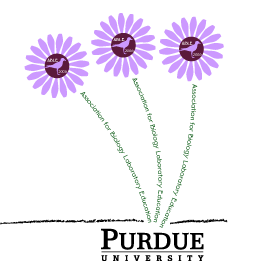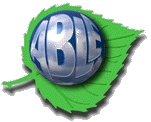Site Links
![]() ABLE 2007: University of Kentucky, Lexington, KY June 5-9. Host: Ruth Beattie
E-mail: rebeat1@uky.edu
ABLE 2007: University of Kentucky, Lexington, KY June 5-9. Host: Ruth Beattie
E-mail: rebeat1@uky.edu


Mini Workshop
Friday June 9
Henne, Kristene and Sue Karcher
The Genetics of Beta-galactosidase--Encoded by the lacZ gene in E
coli--Laboratory Exercises to Illustrate Gene Regulation
Beta-galactosidase is an enzyme that splits lactose into glucose and galactose;
it is encoded by the lacZ gene in the lac operon of the bacterium Escherichia
coli. An operon is a set of structural genes transcribed as a single
messenger RNA and adjacent regulatory regions that control the expression of
these genes. Because beta-galactosidase is a relatively stable enzyme
that is easily assayable using the substrate ONPG (o-nitrophenyl-beta-galactopyranoside),
it is used in laboratory exercises.
The beta-galactosidase system of E. coli was used by scientists François Jacob and Jacques Monod. From their analysis of mutations within the lac operon, they developed a model of transcriptional regulation of the lac operon by the lac repressor. They formulated a model of genetic regulatory mechanisms, showing how, on a molecular level, certain genes are activated and suppressed. They received a Nobel Prize in 1965 for this work.
This workshop describes a laboratory exercise using E.coli strains with different mutations in the lac operon to demonstrate to students the regulation of beta-galactosidase production in E. coli. Students identify the nature of the mutations in each strain based on their determination of the beta-galactosidase activity of each strain. This laboratory enhances the students’ understanding of gene regulation. In addition, we will focus on the historical background and practical applications of the lac operon.